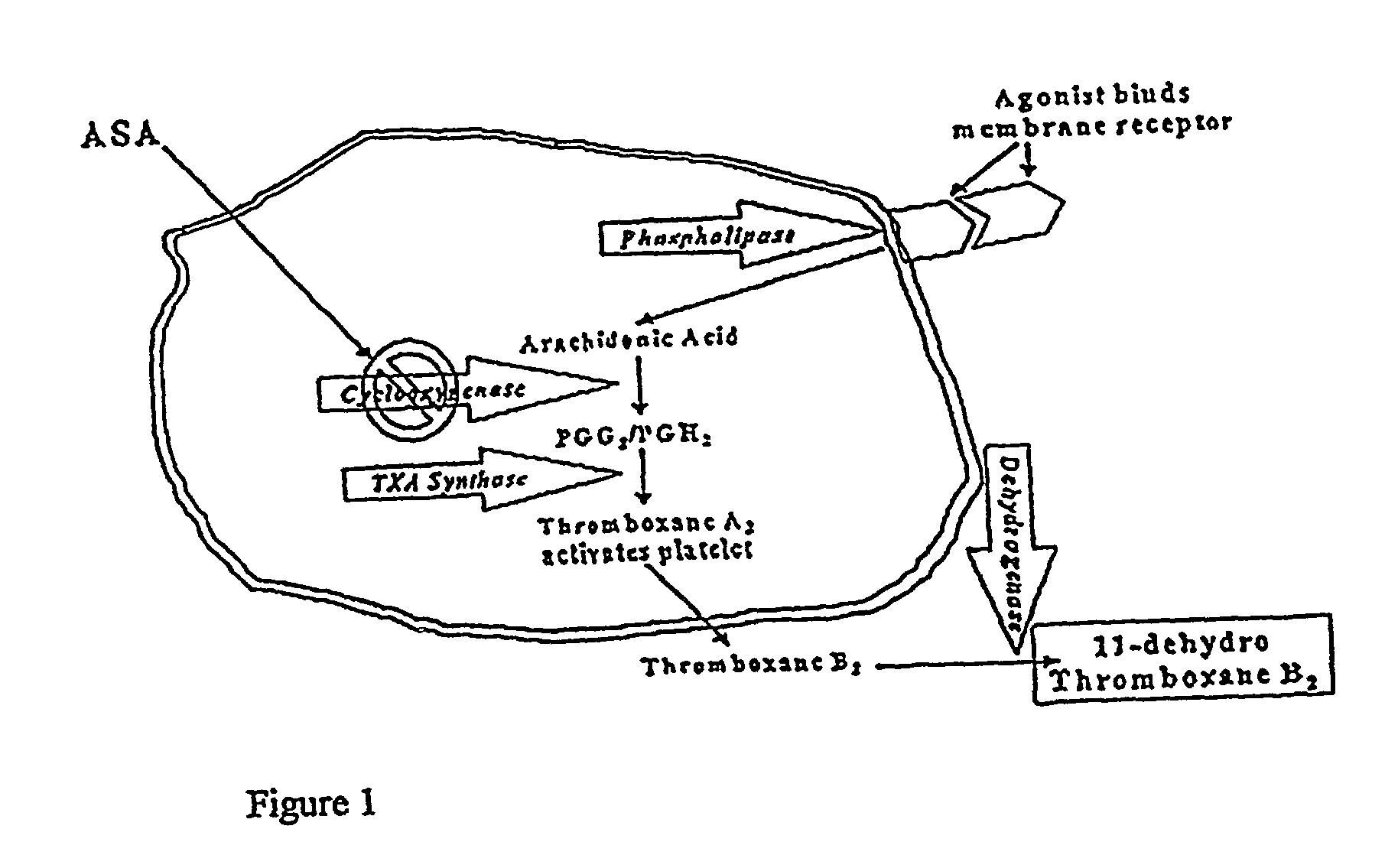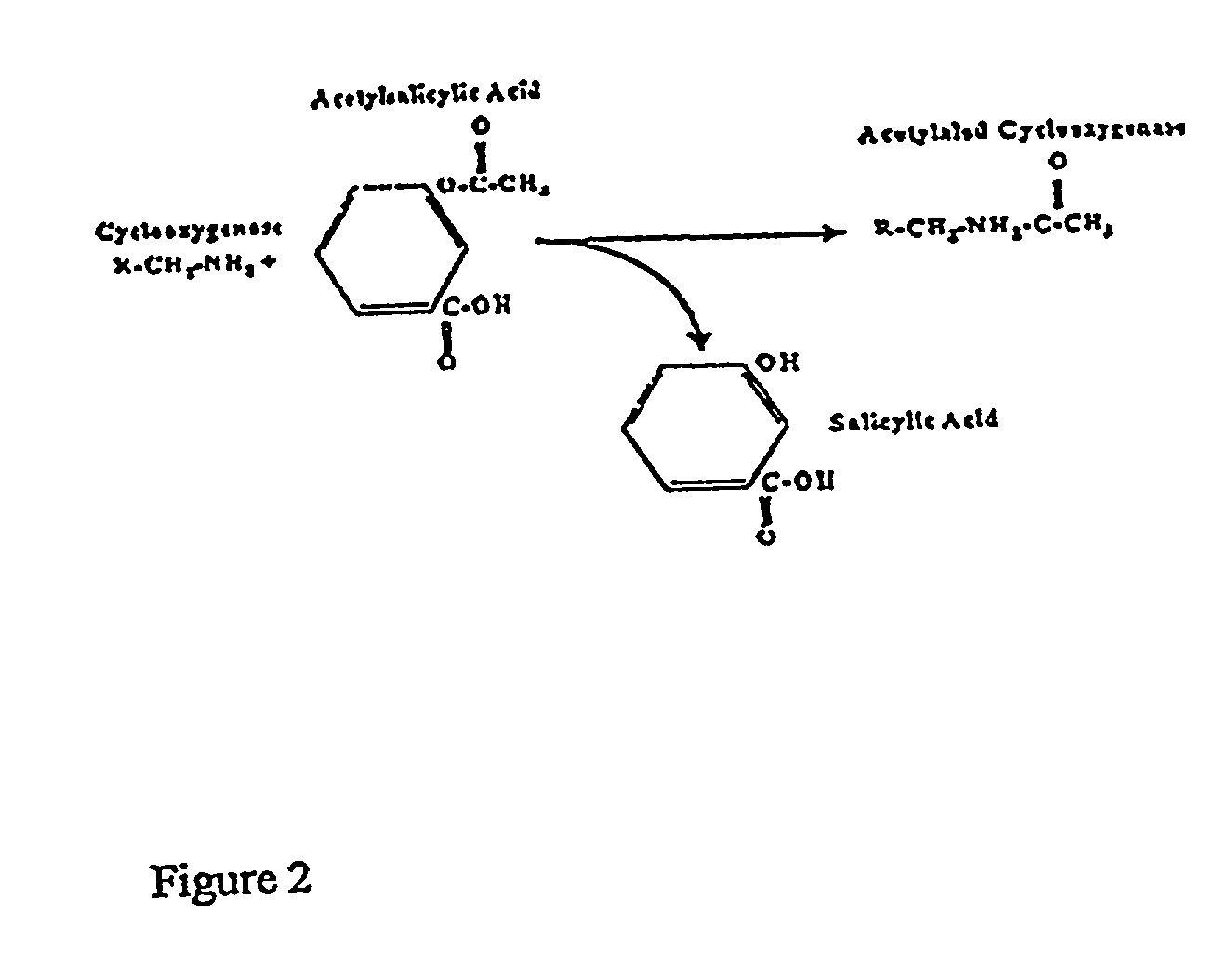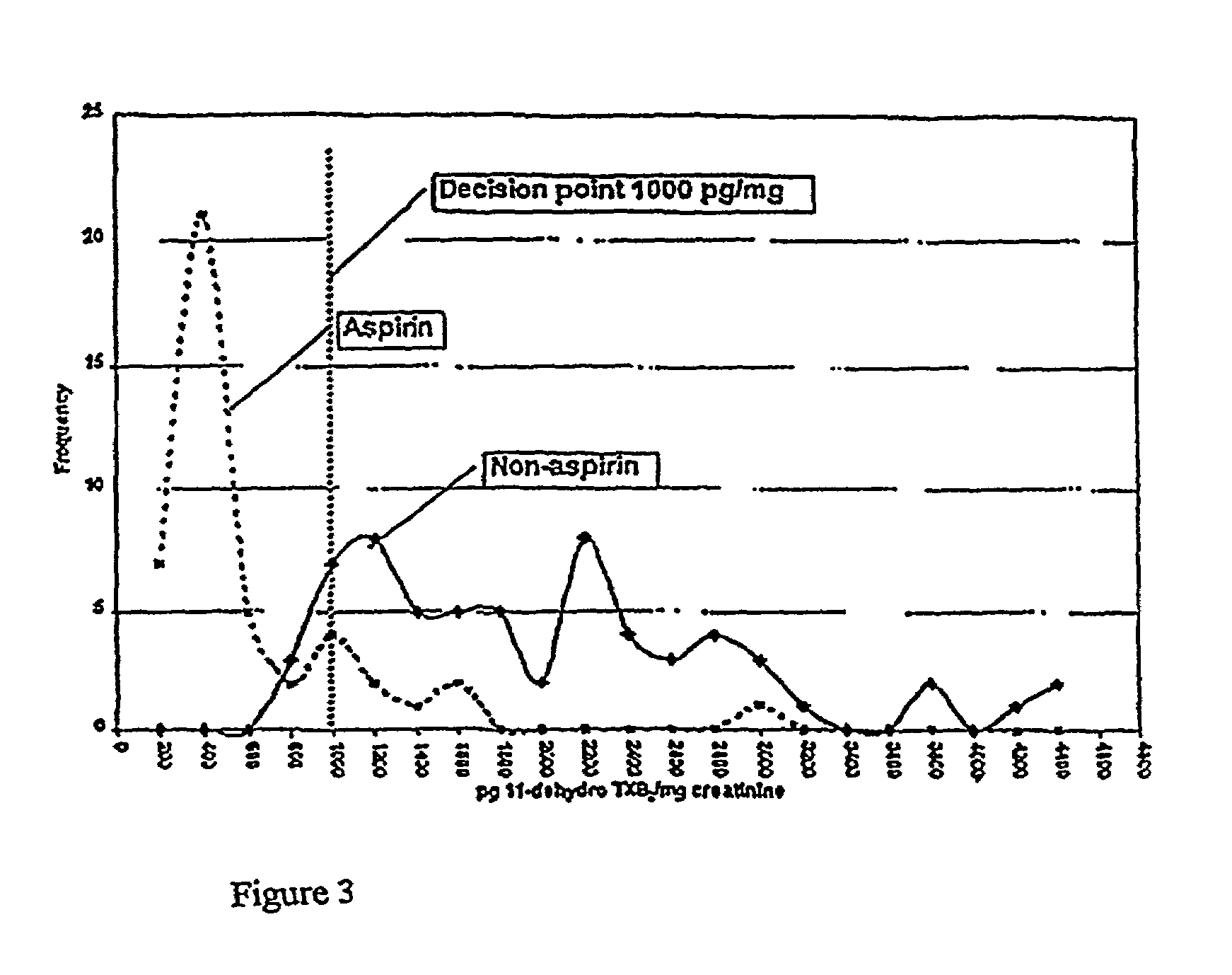Kits for determination of thromboxane B2 metabolite and optimizing aspirin dosage
a metabolite and aspirin technology, applied in the field of aspirin dosage optimization and aspirin dosage optimization, can solve the problems of increased risk of reocclusion, dose-related risk of gastrointestinal bleeding in aspirin therapy, and inability to protect partial-responders from occlusive events
- Summary
- Abstract
- Description
- Claims
- Application Information
AI Technical Summary
Problems solved by technology
Method used
Image
Examples
example 1
Measuring Platelet Activation
Platelet Aggregometry and In Vitro Activation
[0058]One may detect and measure in vitro platelet activation using aggregometry, which detects platelet aggregation; lumiaggregometry, which detects both aggregation and platelet-specific secretions; or platelet-activation instrumentation such as the Date-Behring PFA-100 platelet function analyzer.
Platelet Activation Metabolites and In Vitro Activation
[0059]Plasma, serum, or urine assays of platelet secretions and arachidonic acid pathway metabolites may be employed in the detection of in vitro platelet activation. Assays of plasma or serum TXB2 are used extensively in platelet function research laboratories where specimen management is carefully controlled, but routine clinical measurement is hampered by the in vitro instability of platelets.
Aspirin Dosage and Measures of Platelet Activity
[0060]Measurement of aspirin-induced platelet suppression has led to some unexpected findings. Using the arachidonic acid...
example 2
11-dehydro TXB2 in Randomly Collected Urine From Aspirin and Non-Aspirin Donors
[0065]Urine 11-dehydro TXB2 was assayed in random urine specimens to:[0066]Establish a reference range in non-aspirin users.[0067]Determine whether aspirin therapy is related to levels below the reference range.[0068]Detect aspirin resistance in individuals taking aspirin therapy.
11-dehydro TXB2 Reference Range and results in Aspirin Treatment
[0069]Random urine specimens were collected from 65 individuals who had avoided aspirin for at least two weeks and from 45 individuals who were taking 81 or 325 mg / day by prescription. Each specimen was assayed for 11-dehydro-TXB2. Specimens were assayed at two dilutions using acetylcholinesterase-linked immunoassay. The results were tested for parallelism and averaged. Urine creatinine was assayed using the Jaffe picrate reaction. To normalize for urinary output, results were expressed in pg 11-dehydro TXB2 / mg creatinine. Results of all populations were compared usi...
example 3
Effect of Aspirin on the 11 Dehydro TXB2 Level of Healthy Non-Aspirin Users
[0073]Initiation of aspirin therapy causes mean reduction of 68% for 81 mg / day and 76% for 325 mg / day as illustrated in FIGS. 4 and 5. There was no significant difference between the 81 mg / day and 325 mg / day suppression levels.
[0074]An immunoassay is provided here that measures the effect of aspirin on platelet function. A stable metabolite of the platelet activation process, 11-dehydro-TXB2, can be measured in random urine, bypassing the need for ex vivo platelet function. Utilizing this assay, a significant difference individuals taking 81 or 325 mg of aspirin and individuals not taking aspirin was demonstrated. Values equal to or less than 400 pg 11-dehydro-TXB2 / mg creatinine indicates that aspirin in usage is sufficiently inhibiting COX-1 activity. Aspirin users with levels over 500 pg / mg appear to be resistant and not achieving optimal platelet inhibition, as demonstrated in FIG. 3. Utilizing these decis...
PUM
| Property | Measurement | Unit |
|---|---|---|
| resistance | aaaaa | aaaaa |
| platelet reactivity test | aaaaa | aaaaa |
| platelet aggregation | aaaaa | aaaaa |
Abstract
Description
Claims
Application Information
 Login to View More
Login to View More - R&D
- Intellectual Property
- Life Sciences
- Materials
- Tech Scout
- Unparalleled Data Quality
- Higher Quality Content
- 60% Fewer Hallucinations
Browse by: Latest US Patents, China's latest patents, Technical Efficacy Thesaurus, Application Domain, Technology Topic, Popular Technical Reports.
© 2025 PatSnap. All rights reserved.Legal|Privacy policy|Modern Slavery Act Transparency Statement|Sitemap|About US| Contact US: help@patsnap.com



